This Rondel Dagger is reproduced from an original example which is kept within the collection of the Royal Armouries. An English Rondel dagger, it is dated to the 15th century and is the type of Rondel one might expect to see on a man-at-arms or a knight in the Hundred Years War.
This reproduction comes from Deepeekas Primus line of products which places heightened emphasis on historical details and dimensions as well as a higher level of fit and finish. The dagger has a quadrangular blade of high carbon steel which is sturdily mounted into a hilt of carved and polished hardwood. The guard plate is cast from brass and the pommel plate is crafted from steel and triple riveted into position. Included is a durable sheath of thick leather with stitched construction and an integrated belt loop.
A popular dagger, particularly for the realm of war, the Rondel dagger is essentially a spike mounted to a hilt. Many medieval warriors trained to use such daggers in conjunction with grappling techniques and many fights ended with with one warrior successfully grappling his foe into an indefensible position and then driving a dagger into an ill-defended spot on his armor.
The tough spike of the Rondel is ideal for this purpose because the durable spike can find purchase in the armored harness of the foe and then be used as a lever to deform or pull apart armored plates to allow for the final strike to be driven home. Unlike a thinner dagger, the thick spike of the rondel dagger was less likely to break under such pressure. The rondels which surmount the grip neatly couch a gauntlet-clad fist to give it something to push against for greater penetrative power. The wide pommel rondel on this example is a perfect handle to be grabbed with an off-hand so it can be torqued to use the blade as a lever – or it makes a fine striking point for a fist to hammer the dagger past chain and gambeson alike! An attractive and utilitarian design, the Rondel was a common sidearm for the Medieval man at arms.


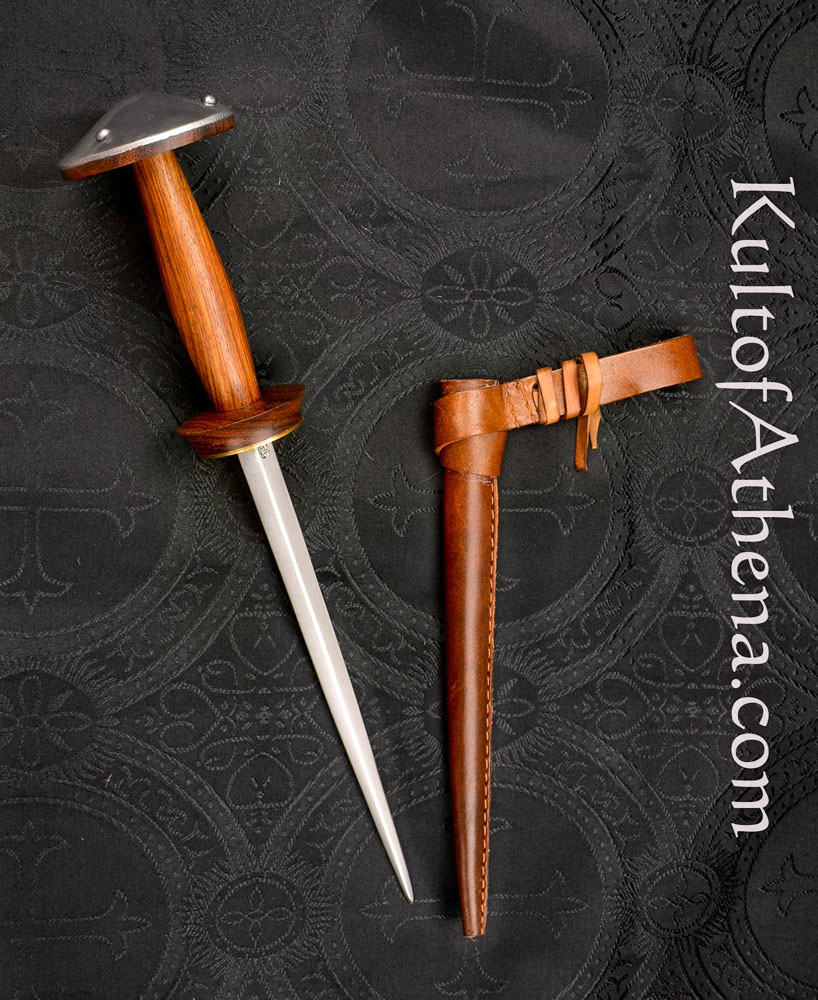
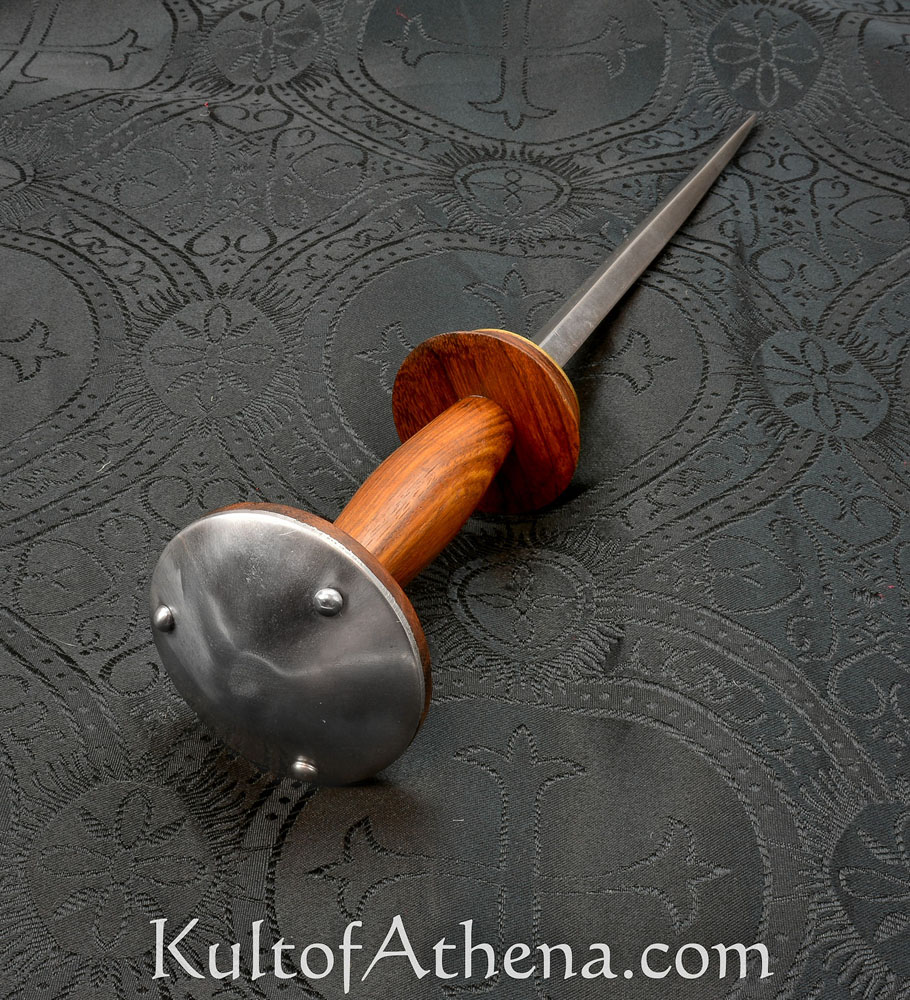
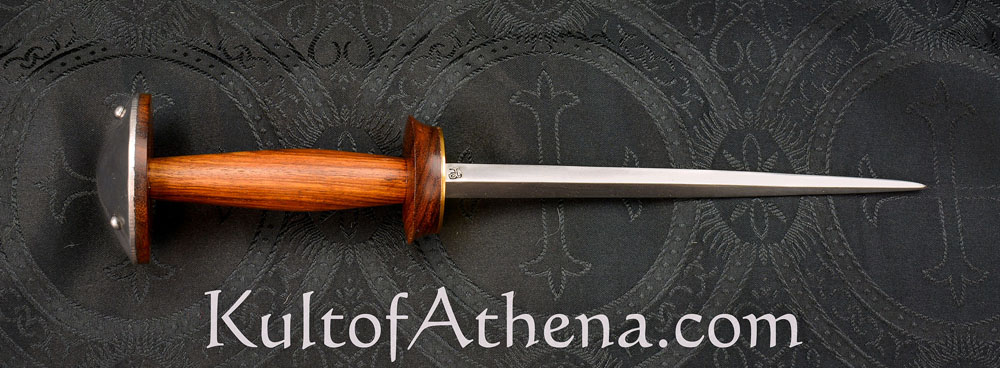
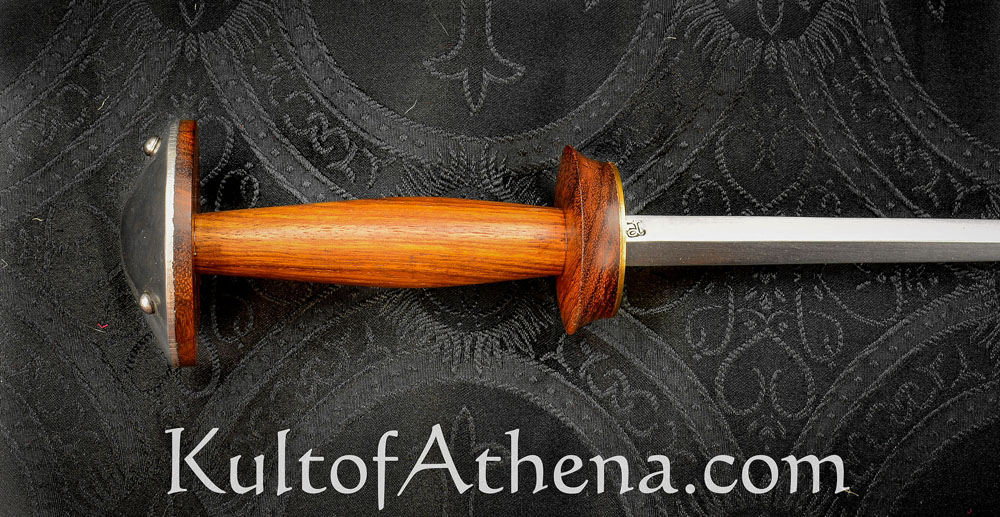

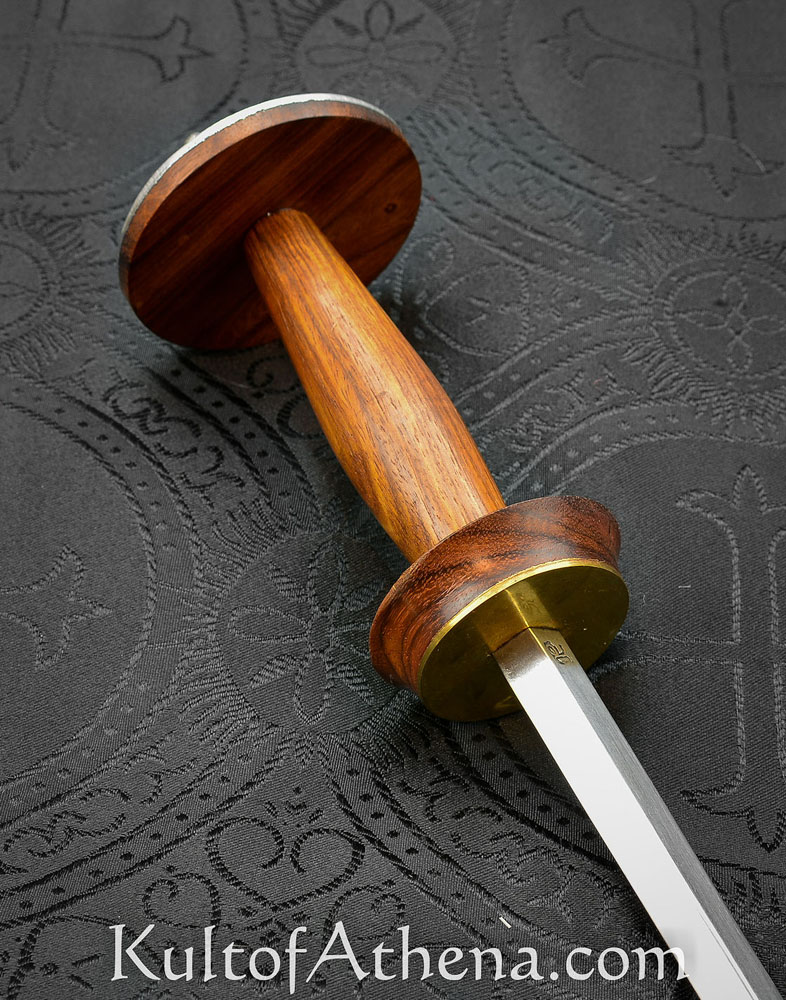
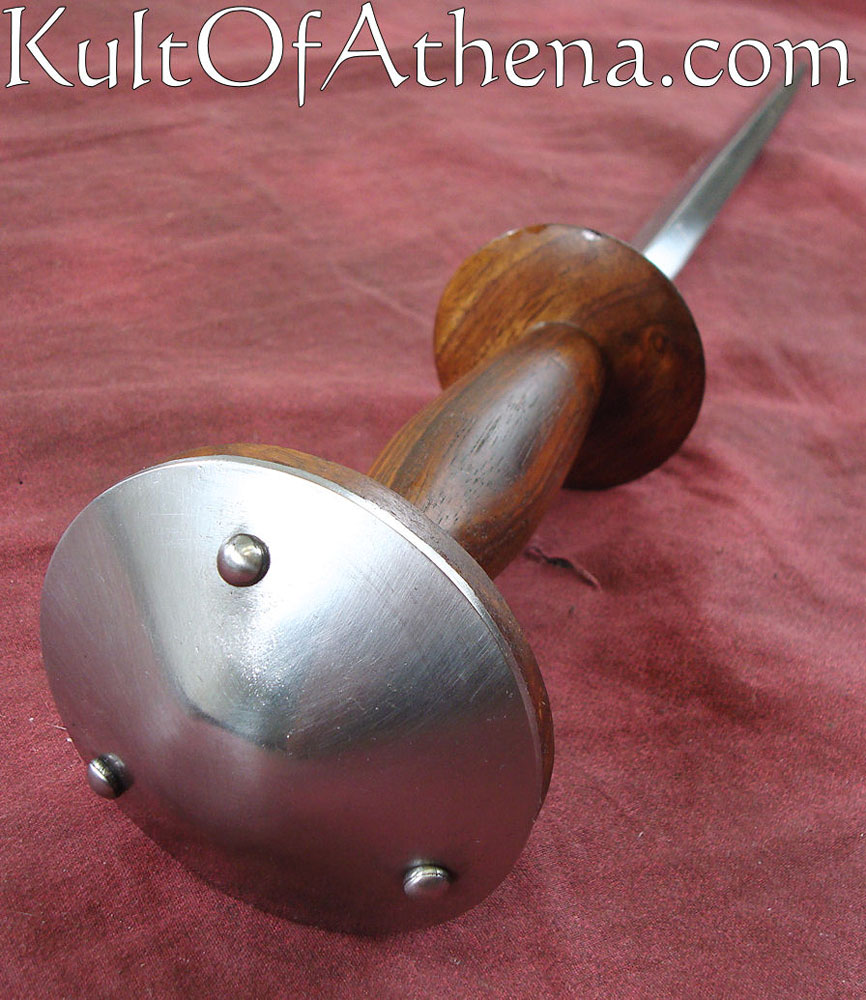
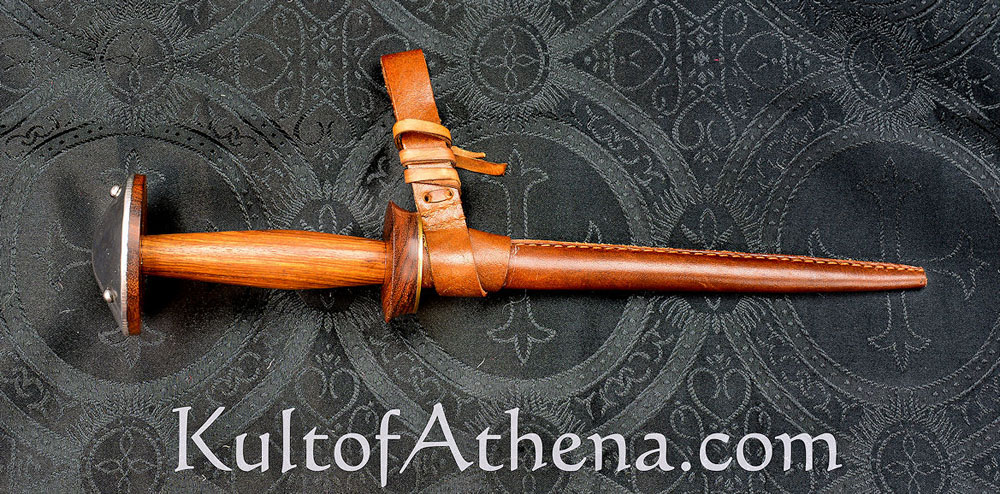
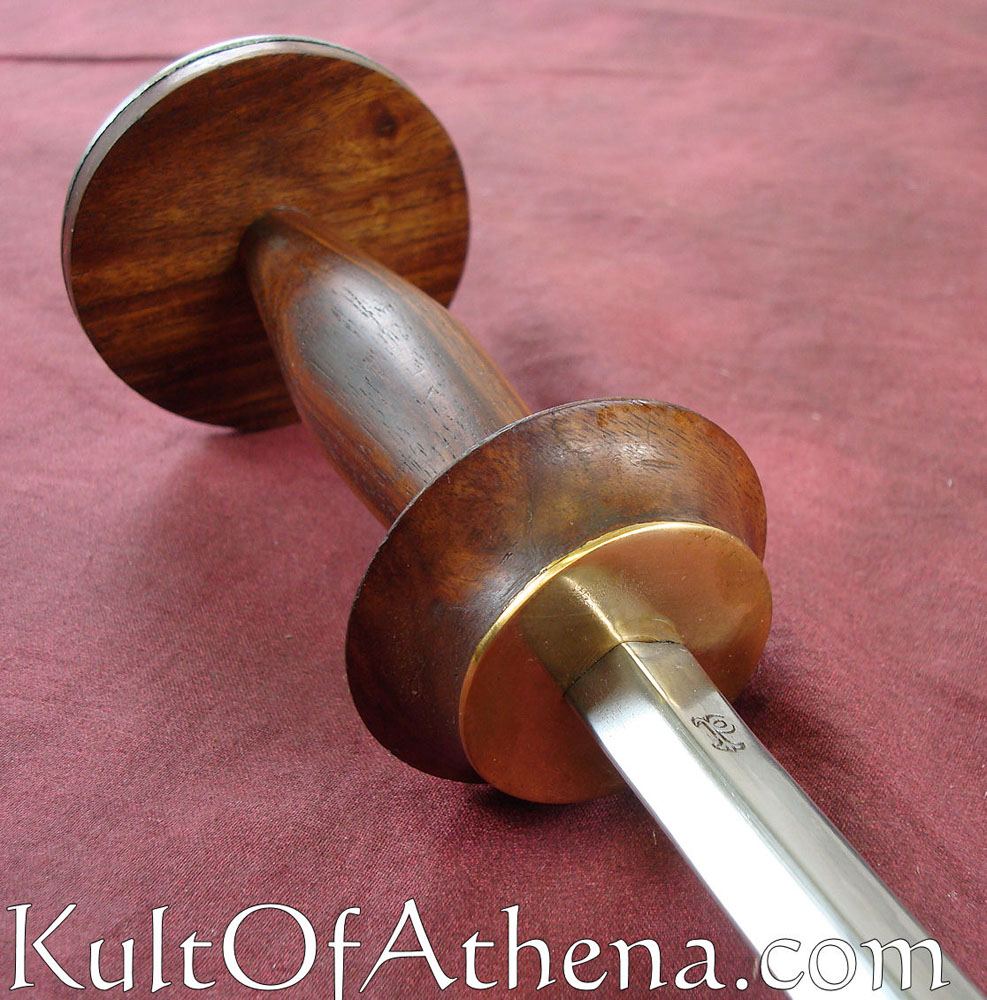
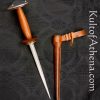
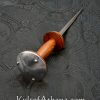




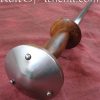

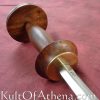
J D. –
Rondel Pretty, nice show piece, especially when demonstrated against maille… The sheath and holder on the other hand, leaves much to be desired. Pommel weighty, so it hangs pommel-down. It always falls out of the sheath unless tied in.